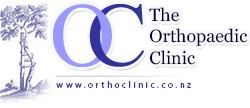The Achilles tendon is a strong fibrous cord present behind the ankle that connects the calf muscles to the heel bone. It is used when you walk, run and jump. When the Achilles tendon becomes thin, weak or if it is not used, it may be susceptible to injury or damage. Achilles tendon rupture occurs most often in middle-aged athletes participating in sports that involve running, pivoting and jumping. Recreational sports that may cause Achilles rupture include tennis, squash, netball and badminton.
If the Achilles tendon is ruptured you will experience severe pain in the back of your leg, swelling, stiffness, difficulty standing on tiptoes and walking. A popping or snapping sound is heard when the injury occurs. You may also feel a gap or depression in the tendon, just above the heel bone.
Your doctor will diagnose the rupture based on symptoms, history of the injury and physical examination. Your doctor will gently squeeze the calf muscles. If the Achilles tendon is intact, there will be flexion movement of the foot, if it is ruptured, there will be no movement observed.
Achilles tendon rupture is treated using non-surgical methods or surgical methods. Non-surgical treatment involves wearing a cast or special brace which is changed after some period of time to bring the tendon back to its normal length. Along with a cast or brace, physiotherapy may be recommended to improve the strength and flexibility of the leg muscles and Achilles tendon. Surgical procedure involves opening the skin and suturing the torn tendon together.
To help prevent an Achilles tendon injury, it is good practice to perform stretching and warm-up exercises before participating in any activities. Gradually increase the intensity and length of time of activity. Muscle conditioning may help to strengthen the muscles in the body.

